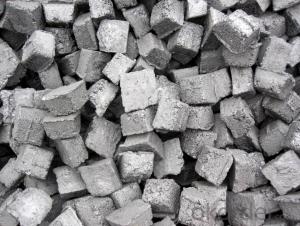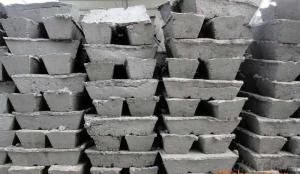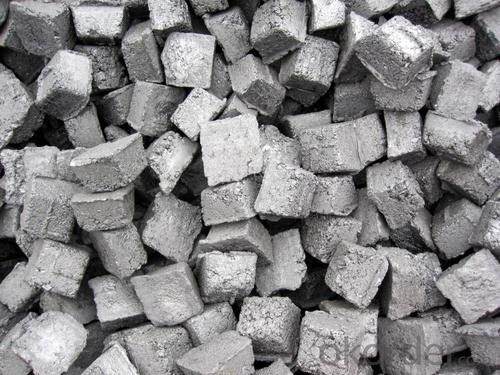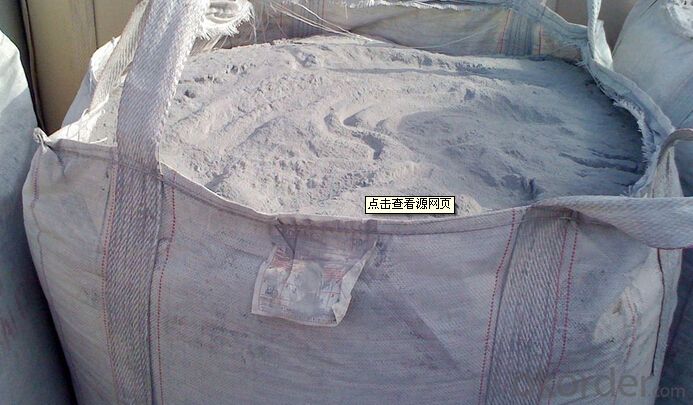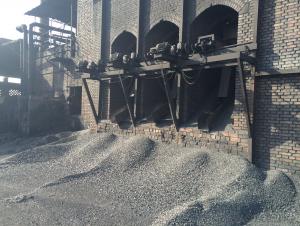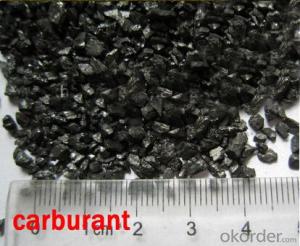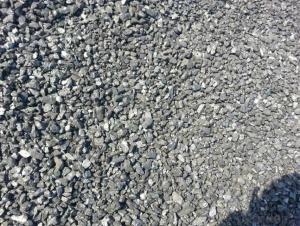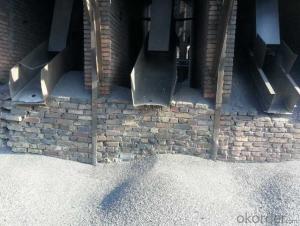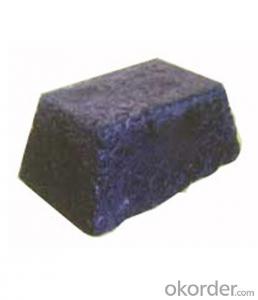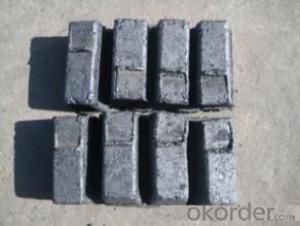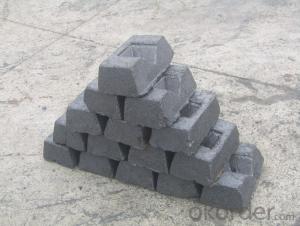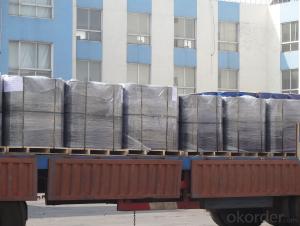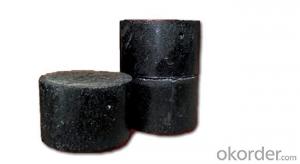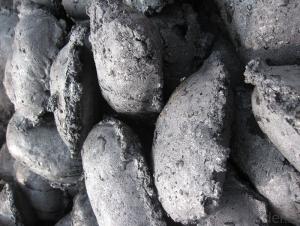Iron Alloy Application Carbon Electrode Paste Block
- Loading Port:
- Lianyungang
- Payment Terms:
- TT OR LC
- Min Order Qty:
- 20 m.t.
- Supply Capability:
- 1000 m.t./month
OKorder Service Pledge
OKorder Financial Service
You Might Also Like
Spcifications
Iron Alloy Application Carbon Electrode Paste Block
1:carbon eletrode paste
2:for ferroalloy,calcium carbide manufacture
3:HS 3801300000,YB/T5212-1996,ISO9001:2008
Product Description
Iron Alloy Application Carbon Electrode Paste Block
Carbon Electrode Paste is a self-baking electrode used in submerged arc furnaces for delivering power to the charge mix. Electrode Paste is added to the top of the electrode column in either cylindrical or briquette form. As the paste moves down the electrode column the temperature increase causes the paste to melt and subsequently bake forming a block of electrically conductive carbon. Electrode Paste is essentially a mix of Electrically Calcined Anthracite (ECA) or Calcined Petroleum Coke (CPC) with Coal Tar Pitch.
Product Feature
Iron Alloy Application Carbon Electrode Paste Block
Ash 4.0%max5.0%max 6.0%max7.0% Max9.0% Max11.0% Max
VM 12.0%-15.5%12.0%-15.5%12.0%-15.5%9.5.0%-13.5%11.5%-15.5%11.5%-15.5%
Strength
Compress 18.0Mpa Min17.0Mpa Min15.7Mpa Min19.6Mpa Min19.6Mpa Min19.6Mpa Min
Specific 65μΩm Max68μΩm Max75μΩm Max80μΩm Max90μΩm Max90μΩm Max
Resistance
Bulk Density1.38G/CM3 Min1.38G/CM3 Min1.38G/CM3 Min1.38G/CM3 Min1.38G/CM3 Min1.38G/CM3 Min
Product Picture
Iron Alloy Application Carbon Electrode Paste Block
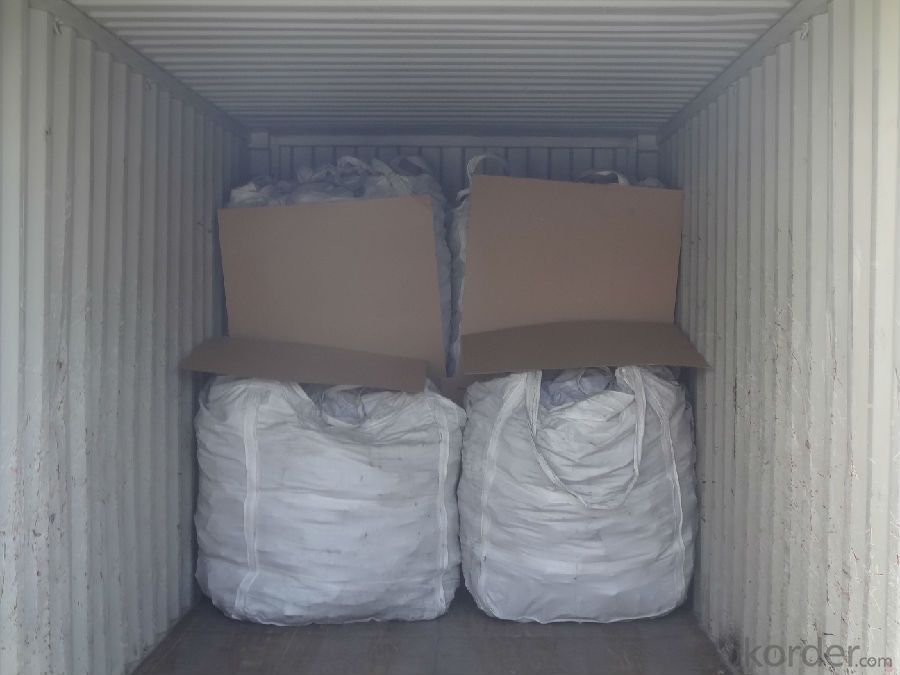
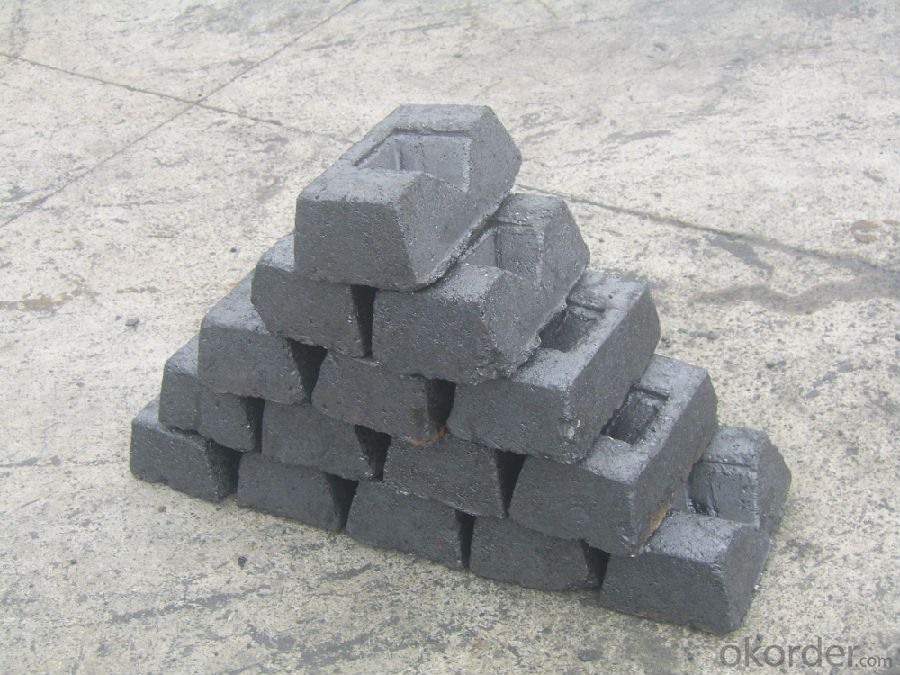
FAQ:
Iron Alloy Application Carbon Electrode Paste Block
What's our advantage? Why choose us?
1.High quality and competitive price.
2.Timely delivery.
3.If any item you like. Please contact us.
- Q: How does carbon cycle through living organisms?
- Carbon is exchanged and recycled among different parts of the Earth, including living organisms, in a process known as the carbon cycle. Living organisms primarily acquire carbon through photosynthesis, where sunlight, carbon dioxide, and water are used to produce glucose and oxygen. Plants absorb carbon dioxide from the atmosphere and convert it into glucose, which serves as an energy source for their growth. Some glucose is immediately utilized by plants, while the excess is stored as starch and other carbohydrates. This is how carbon is initially incorporated into living organisms. Consumers, such as animals, obtain carbon by consuming plants or other animals that have consumed plants. When animals consume plants, the stored carbohydrates are broken down into glucose, releasing carbon dioxide through cellular respiration. Animals use glucose as an energy source for their own metabolic activities. When animals and plants die or produce waste, their organic matter decomposes, releasing carbon back into the environment. Some of this carbon is converted into carbon dioxide through decomposition and returned to the atmosphere. However, decomposers like bacteria and fungi convert a significant portion of carbon into organic compounds that can be utilized by other living organisms. The carbon cycle continues as carbon is constantly exchanged between the atmosphere, living organisms, and Earth's reservoirs such as the oceans and soil. Carbon can also be stored for extended periods as fossil fuels like coal, oil, and natural gas. When these fuels are burned for energy, carbon dioxide is released into the atmosphere, contributing to the greenhouse effect and climate change. In summary, the carbon cycle is a complex process involving the continuous exchange and transformation of carbon between living organisms and the environment. It is critical for maintaining carbon balance in our ecosystem and plays a significant role in regulating the Earth's climate.
- Q: Well, recently, the carbon cycle has suddenly come up with a lot of questions. What's the definition of carbon and light carbon? What are the characteristics, and what are the differences between the two?
- The organic matter is composed of recombinant LFOM was completely decomposed residue or, to re synthesis of aromatic substances as the main organic matter (mainly humus), its stable structure is complex, in fact this part of organic matter in soil clay is a combination between, or in the process of the formation of soil aggregates Among the internal organic matter enclosed in aggregates, plays a very important role in maintaining the structure of aggregates, it is difficult to be utilized by microorganisms, soil carbon pool is stable. The content of 2 components of features from a certain extent that the carbon sensitive to climatic and environmental changes of the reaction.
- Q: How about carbon content of coal ash?
- 5. Fill in the records and present the report of the measurement result.6, in order to measure the accurate data, a sample should be tested in parallel with three crucibles at the same time, and the average of the results should be taken at last.
- Q: What materials can be carbonitriding?
- Low temperature carbonitriding for high alloy tool steel, high-speed steel tools, etc., in temperature carbonitriding is under great pressure not only in carbon steel wear parts, high temperature carbonitriding is mainly used for medium carbon steel and alloy steel under great pressure.
- Q: What are the basic structures of iron carbon alloys?
- The symbol is A. The stable austenite has a temperature of 727 DEG C, when the solubility of carbon is 0.77%, the strength, hardness and plasticity of austenite are very good, which is the organization required for high temperature forging or rolling of most steels.Cementite: a metallic compound of iron and carbon with a carbon content of 6.69%. The formula Fe3C is expressed in symbolic Cm. High hardness, poor plasticity, hard and brittle, the number of cementite increases, strength and hardness increase, while plasticity decreases.
- Q: What are the environmental impacts of carbon emissions from industries?
- The environmental impacts of carbon emissions from industries are significant and wide-ranging. Firstly, carbon emissions contribute to the greenhouse effect, which leads to global warming and climate change. The excessive release of carbon dioxide and other greenhouse gases into the atmosphere traps heat, causing the Earth's temperature to rise. This has resulted in the melting of polar ice caps, rising sea levels, and extreme weather events such as hurricanes and droughts. These changes disrupt ecosystems, lead to the loss of biodiversity, and threaten the survival of numerous species. Secondly, carbon emissions contribute to air pollution. Industries release not only carbon dioxide but also other harmful pollutants such as sulfur dioxide, nitrogen oxides, and particulate matter. These pollutants can have detrimental effects on human health, causing respiratory problems, cardiovascular diseases, and even premature death. In addition, they contribute to the formation of smog and acid rain, which further damage ecosystems and harm plant and animal life. Moreover, carbon emissions from industries have a negative impact on water systems. When carbon dioxide dissolves in water, it forms carbonic acid, leading to a decrease in pH levels and making the water more acidic. This acidification harms marine life, particularly organisms with shells or skeletons made of calcium carbonate, such as coral reefs, shellfish, and plankton. The disruption of marine ecosystems can have cascading effects on other species and disrupt the food chain. Lastly, carbon emissions contribute to deforestation and habitat destruction. Industries often rely on fossil fuels for energy, which leads to the clearing of forests to make way for mining or drilling operations. This destruction of natural habitats not only reduces biodiversity but also releases stored carbon from trees into the atmosphere, exacerbating the carbon emissions problem. To mitigate these environmental impacts, industries must prioritize the reduction of carbon emissions. This can be achieved through adopting cleaner and more sustainable energy sources, implementing energy-efficient technologies, and implementing stricter regulations and policies. Transitioning to renewable energy, improving industrial processes, and investing in carbon capture and storage technologies are essential steps towards mitigating the environmental impacts of carbon emissions from industries.
- Q: Carbon injection molding machine heating several degrees
- Polycarbonate (PC) is a colorless and transparent engineering plastics, the impact strength is high, the use of a wide temperature range, good creep resistance, electrical insulation and dimensional stability; the disadvantage is sensitive to the gap, environmental stress cracking resistance, with metal insert molding products is difficult.Polycarbonate, English name Polycarbonate, referred to as PC. PC is a kind of amorphous, odorless, non-toxic, highly transparent colorless or slightly yellow thermoplastic engineering plastics, has excellent physical and mechanical properties, especially excellent shock resistance, tensile strength, bending strength, compressive strength and high creep; small size stability; has good heat resistance and low temperature resistance and with mechanical properties, stable in a wide range of temperature dimensional stability, electrical properties and flame retardant properties, can be used for a long time at -60~120 deg.c; no obvious melting point, molten at 220-230 DEG C; because the molecular chain rigidity, resin melt viscosity; low water absorption, low shrinkage, size high precision, good dimensional stability, permeability of films is small; self extinguishing materials; stable to light, but not UV resistance, good weather resistance; oil resistance, acid and alkali resistance, non oxidizing acids and amines, ketones, solution Chlorinated hydrocarbons and aromatic solvents are prone to hydrolysis and cracking in water for a long time. The disadvantage is that they are prone to stress cracking due to poor fatigue resistance, poor solvent resistance and poor wear resistance.
- Q: Which carbon content is larger, steel or pig iron?
- Iron and steel is distinguished by carbon: carbon content below 2.11% for carbon steel, according to can be divided into carbon steel low carbon steel (WC = 0.25%), carbon steel (WC0.25% - 0.6%) and high carbon steel (WC>0.6%);
- Q: How does carbon impact the melting of polar ice caps?
- The primary way in which carbon affects the melting of polar ice caps is through climate change. Carbon dioxide, a greenhouse gas, traps heat in the atmosphere and causes the Earth's temperature to rise. This rise in temperature leads to the melting of polar ice caps. Human activities, such as burning fossil fuels, deforestation, and industrial processes, release carbon into the atmosphere. This carbon accumulates and contributes to the greenhouse effect. As the concentration of carbon dioxide increases, more heat is trapped, resulting in global warming. The warming caused by carbon has a particularly detrimental effect on polar ice caps, especially those in the Arctic and Antarctica. Rising temperatures accelerate the melting of the ice caps, causing them to shrink and eventually collapse. This process is known as ice cap retreat. The impact of carbon on polar ice caps is two-fold. Firstly, the melting of ice caps contributes to rising sea levels, which poses a significant threat to coastal communities and low-lying areas worldwide. As the ice caps melt, the water flows into the oceans, causing them to expand. This can result in coastal erosion, increased flooding, and the loss of valuable habitats and ecosystems. Secondly, the melting of polar ice caps also disrupts the delicate balance of the Earth's climate system. The reflective surface of ice helps regulate the planet's temperature by reflecting sunlight back into space. However, as the ice melts, it is replaced by darker surfaces that absorb more heat, such as water or land. This further intensifies global warming, creating a feedback loop that accelerates the melting process. Overall, the impact of carbon on the melting of polar ice caps is significant. The continuous release of carbon into the atmosphere contributes to the loss of these crucial ecosystems, leads to sea-level rise, and disrupts the Earth's climate system. To mitigate these effects, it is crucial to reduce carbon emissions and transition to cleaner and more sustainable sources of energy.
- Q: What are the differences between the three carburizing, nitriding and carbonitriding? What are the different effects on the material?
- Carburizing: carburized workpiece after quenching and low temperature tempering, so that the surface has a high hardness of river abrasion resistance, and the heart still maintain a good plastic River toughness, so as to meet the workpiece outside the hard, internal use of tough requirementsNitriding: after the nitriding of the parts, the surface forms a nitride.
Send your message to us
Iron Alloy Application Carbon Electrode Paste Block
- Loading Port:
- Lianyungang
- Payment Terms:
- TT OR LC
- Min Order Qty:
- 20 m.t.
- Supply Capability:
- 1000 m.t./month
OKorder Service Pledge
OKorder Financial Service
Similar products
Hot products
Hot Searches
Related keywords
